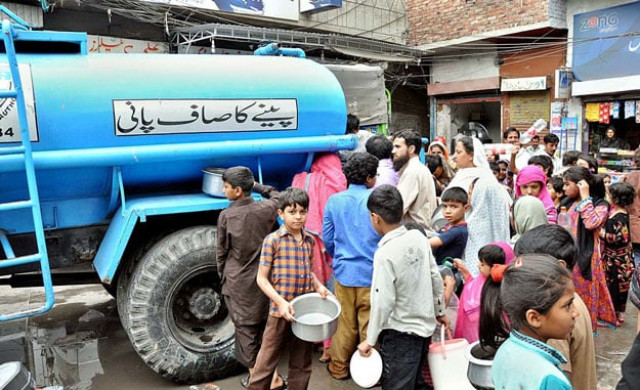Dirty drinking water
Nearly 75 per cent of drinking water resources in the country are contaminated and unfit for human us

Out of 360 sources tested, only 90 — 25 per cent — were found to be safe; the rest were unfit for human consumption. PHOTO: APP
This is a truly horrifying statistic. The PCRWR tested water in 24 cities. It was looking for ways in which to identify the gaps in supplying potable water and stumbled on a disaster. Out of 360 sources tested, only 90 — 25 per cent — were found to be safe; the rest were unfit for human consumption. Analysis of the samples revealed bacteriological contamination, ‘hardness’, arsenical suspensions, iron and other dissolved solids. Sindh was by far the worst case — 96 per cent of all the samples were found to be unsafe. There was not a single safe source in Karachi, Hyderabad or Sukkur. In Punjab, 63 per cent were unsafe, in Khyber-Pakhtunkhwa (K-P), 90 per cent and Balochistan 85 per cent. This is indeed a public health crisis. Around 40 per cent of the diseases suffered by the population are waterborne. This is no less an emergency than the many other emergencies faced by Pakistan, and is not going to be quickly solved. The majority of the population has little choice and has to use ‘raw’ untreated water. At the very least a national public awareness campaign is the need of the hour. We await developments with interest but little real hope.
Published in The Express Tribune, March 17th, 2015.
Like Opinion & Editorial on Facebook, follow @ETOpEd on Twitter to receive all updates on all our daily pieces.















COMMENTS
Comments are moderated and generally will be posted if they are on-topic and not abusive.
For more information, please see our Comments FAQ